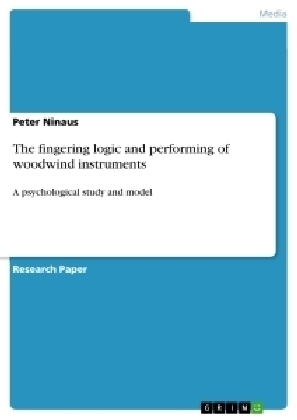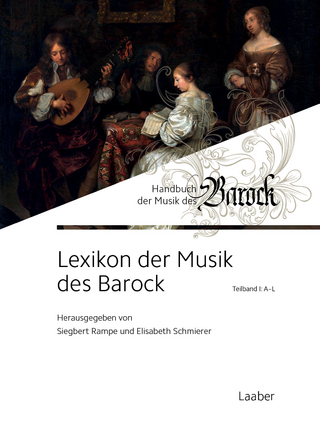
The fingering logic and performing of woodwind instruments
GRIN Verlag
978-3-640-85017-4 (ISBN)
- Titel nicht im Sortiment
- Artikel merken
Work experienceMusician self-employed 01/01/1993 - Current -Austria Guide self-employed 01/06/2014 - Current -Graz, Austria Culture, musicVisitors service Universalmuseum Joanneum 01/05/2013 - 31/08/2017 -Graz, Austria Visitors service Art-historical Museum 01/06/2011 - 31/03/2013 -Vienna, Austria Project researcher University of Life Sciences 01/04/2012 - 01/06/2012 -Vienna, Austria Visiting professor Edward Said National Conservatory of Music - Birzeit University 01/09/2010 - 30/06/2011 -Ramallah, Autonomous Palestinian Territories Music coursesMuseum service Art-historical Museum 01/10/2009 - 30/04/2010 -Vienna, Austria Music teacher Music school 01/09/1996 - 10/07/2009 -Vasoldsberg, Austria Headmaster Music school 01/08/1998 - 10/07/2008 -Vasoldsberg, St. Ulrich am WaasenEducation and trainingUniversity of music in Graz PhD Musicology, Ethnomusicology 01/10/2016 - 18/03/2020 -www.kug.at Bfi - University of applied studiesTourist guiding - national license 01/10/2011 - 31/01/2013 University of Graz Magister (Master) Systematic Musicology 01/10/1998 - 15/09/2008 -www.uni-graz.at -Field(s) of study: Arts and humanities, psychologyUniversity of music in Graz Bakkalaureus (BA) Music education 01/10/2003 - 01/05/2004 Gustav Mahler Privat-universiy Certification program - Clarinet, Music theory 01/09/2000 - 20/02/2002 -https://www.gmpu.ac.at/ University of music in Graz Wind band conductor 01/10/1993 - 30/06/1995 BORG Monsberggergasse Highschool diploma 10/09/1994 - 08/06/1998 Language skillsMother tongue German Other languagesEnglish Listening C2 Reading C2 Spoken interaction C2 Spoken productionC2 Writing C2 Portuguese Listening C2 Reading C1 Spoken interaction C1 Spoken production C2 Writing C1Slovenian Listening C1 Reading B2 Spoken interaction B1 Spoken production B2 Writing B1Latin Listening B2 Reading C2 Spoken interaction A2 Spoken production A2 Writing C2Indonesian Listening A2 Reading A2 Spoken interaction A2 Spoken production A2 Writing A1Other skills-Microsoft Office -social Media -Organizational and planning skills -Zoom, Skype-Google Docs -Google Drive -YouTube -Internet user -Team-work oriented -Good listener and communicator EC-Europass
| Erscheint lt. Verlag | 4.3.2011 |
|---|---|
| Sprache | englisch |
| Maße | 148 x 210 mm |
| Gewicht | 346 g |
| Themenwelt | Kunst / Musik / Theater ► Musik ► Allgemeines / Lexika |
| Schlagworte | Clarinet • clarinet systems • clarinetsystems • fingering difficulties • fingeringdifficulties • hand problems • handproblems • Method • motor skills • motorskills • musiceducation • Music Education • music psychology • musicpsychology • Posture • saxophone |
| ISBN-10 | 3-640-85017-3 / 3640850173 |
| ISBN-13 | 978-3-640-85017-4 / 9783640850174 |
| Zustand | Neuware |
| Haben Sie eine Frage zum Produkt? |
aus dem Bereich


